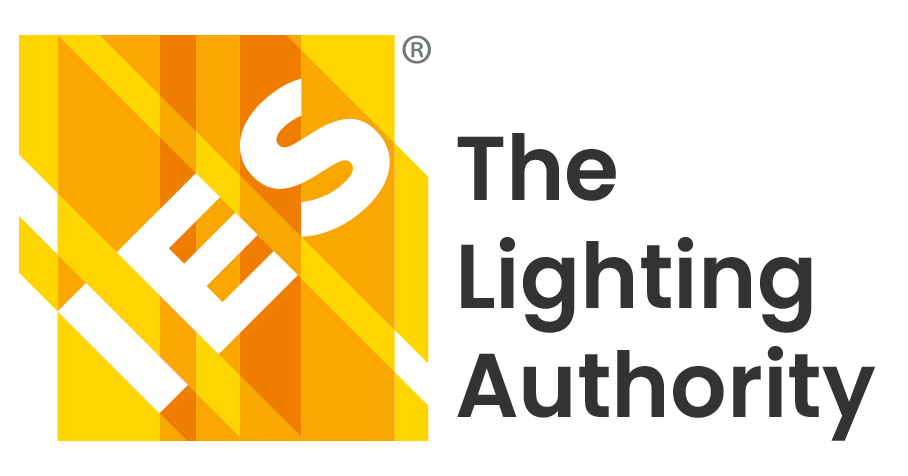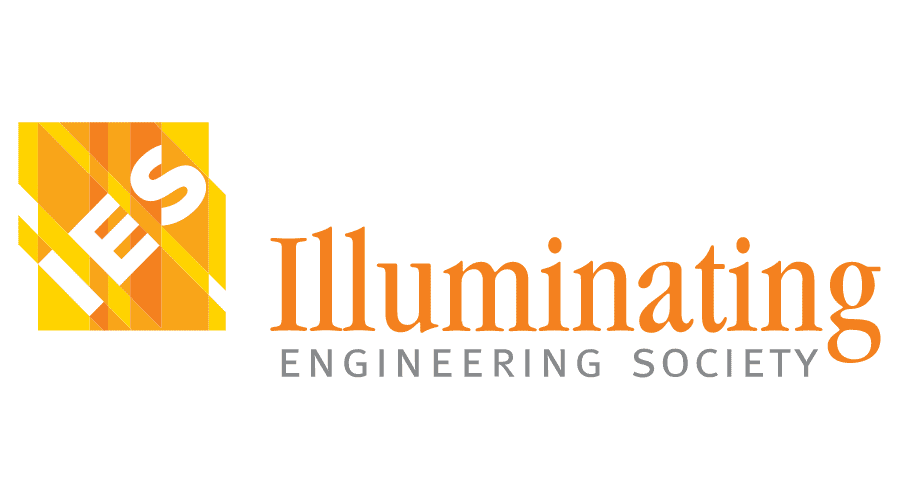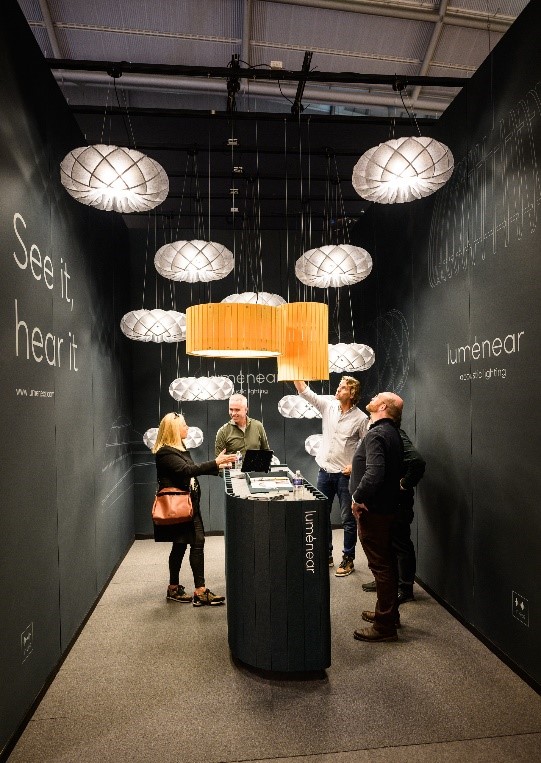Editorial Disclaimer
The views expressed in articles published on FIRES do not necessarily reflect those of IES or represent endorsement by the IES.
By Mehlika Inanici, Ph.D.
The dynamic intensity and spectra of daylight inform human beings about the passage of time and weather, produce the best color rendition, regulate circadian rhythms in all living beings, and facilitate sustainable lighting practices. The color content of indoor daylight is important for color appearance and the intended perceptual and aesthetic effects, as well as for circadian entrainment and effective horticultural stimulus. Although the importance of spectrum is widely acknowledged for a diverse set of design applications, our metrics and evaluation criteria mainly focus on the photopic units. It is necessary to augment the current daylighting design and research practices with the ability to measure, generate, and evaluate spectrally accurate data across the full spectrum to study the impact of lighting on human visual and nonvisual systems, along with plant photosynthesis.
One of the major obstacles is our limited understanding of spectral variation across a sky dome at a given time, and throughout the year under different weather conditions. Luminance variability of the sky and the resultant daylight availability have long been measured and modeled. However, the spectral content of skies and spectral distribution across the sky dome are not well studied. As a result, we typically design with the partial information of daylighting that exists in the physical world. In daylight simulation software, the sun and diffuse portions of CIE1 and Perez all-weather skies2 are modeled as equal-energy white light sources with RGB values of (1,1,1). As a result, the direct and diffuse components of sky light produce a default correlated color temperature (CCT) of 5453 K.3
When we consider the color of the sky, 6500 K is generally assumed to approximate the daylight. There are only small number of spectral measurements of the skies around the world. One of the most comprehensive CCT databases comprises 2,600 instantaneous measurements across a two-year span from Granada.4 The data ranges between 3758 K and 34573 K for this Southern Mediterranean location. Although the most frequent observance was 5700 K, both the spread of the data and frequency rate of any given CCT challenges our preconception of daylight’s spectrum being 6500 K, or our common practice of using sky models at 5453 K in computer simulations. CCT is a one-dimensional measurement, but it is useful for understanding the variability of the horizontal sky color. Narrow-field spectrophotometers can scan the sky to measure variability of spectral wavelengths across the sky dome in 145 discreet patches5 (the same resolution for a typical sky luminance distribution measurement), but long-term measurements are scarce, as they require expensive instrumentation. As a result, there is a lack of information about how daylight spectra change across the globe under different climatic conditions.
It is possible to study daylight spectra by capturing the sky dome with spectrally accurate high dynamic range (HDR) photographs.6 A sample of variations collected in Seattle, WA are shown in Figure 1. These images visualize the spread of luminance and spectrum at different times of the year and across the sky dome. The CCT data among the selected samples range between 4797 K and 22686 K, producing a wide range of CCT values in Seattle, as well.3
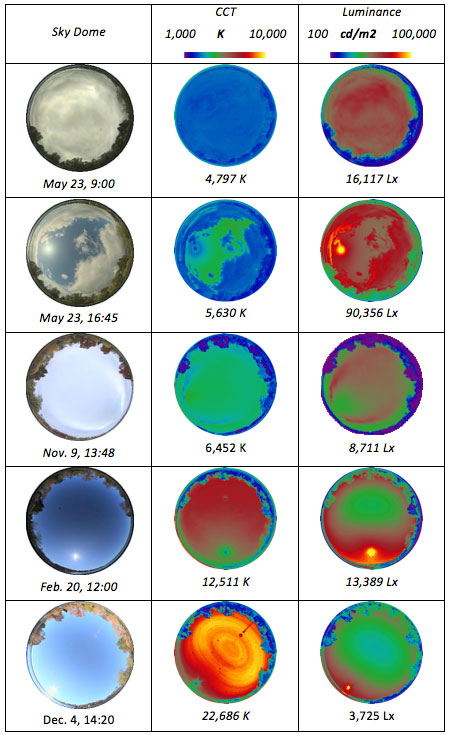
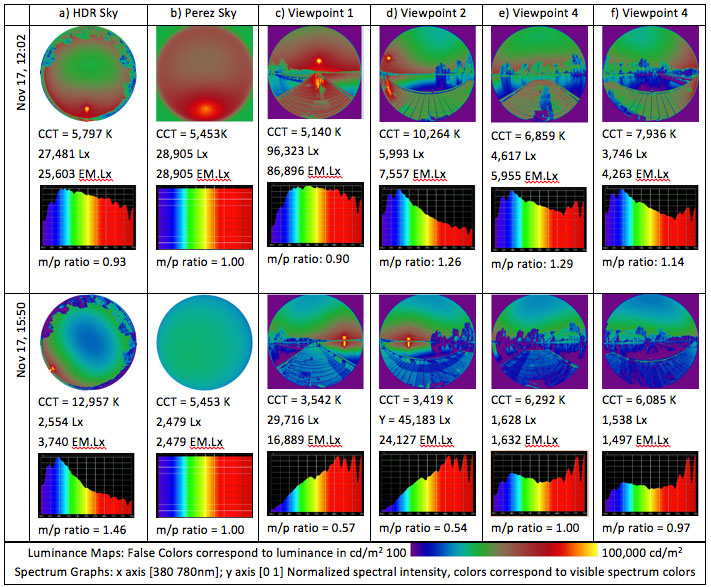
There are three take-away points:
- Orientation significantly impacts not only the intensity, but the color content of daylight that we bring indoors. This information can be used as an advantage in applications where color content is important. The impact of the spectra of the surrounding urban and natural elements should also be considered.
- We need to develop spectrally accurate sky models. Although there are few existing efforts,7 we need further measurements, testing, and development to incorporate spectra in mainstream simulation and analysis tools.
- We need to continue promoting human-centric approaches that focus on lighting at the eye rather than horizontal illuminances, to design for better human experience.
References
1 CIE/ISO. 1996. Spatial distribution of daylight – CIE standard overcast sky and clear sky. ISO 15469/CIE S003.
2 Perez R, Seals JM and Ineichen P. 1993. “An All-weather Model for Sky Luminance Distribution,” Solar Energy, 50(3), 235-245.
3 Inanici M. “Tri-stimulus Color Accuracy in Image-based Sky Models: Simulating the Impact of Color Distributions throughout the Sky Dome on Daylit Interiors with Different Orientations,” IBPSA 2019 Conference, Rome, Italy, September 2-4, 2019.
4 Hernandez-Andres J., J. Romero and J.L. Nieves (2001). Color and spectral analysis of daylight in Southern Europe. Journal of Optical Society of America 18(6), 1325-35.
5 Knoop M., A. Diakite and F. Rudawski (2015). Methodology to create spectral sky models to enable the inclusion of colorimetric characteristics of daylight in research and design. Proceedings from CIE Conference, Manchaster (UK). June 28 – July 3 2015.
6 Jung B and Inanici M. “Measuring Circadian Lighting through High Dynamic Range Photography,” Lighting Research and Technology, 51(5),742-763. Article first published online: August 10, 2018; Issue published: August 1, 2019.
7 ALFA (Adaptive Lighting for Alertness). https://www.solemma.com/Alfa.html.
